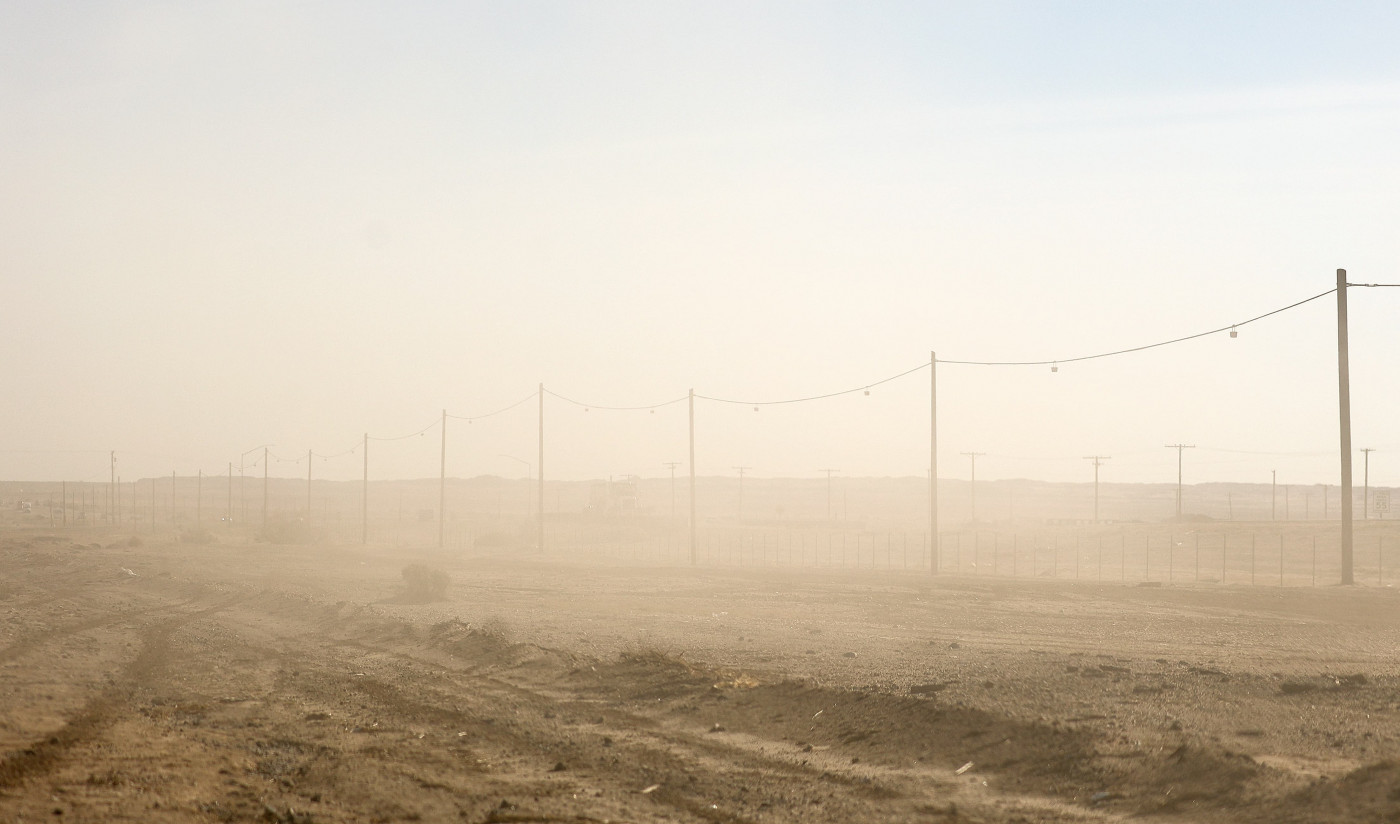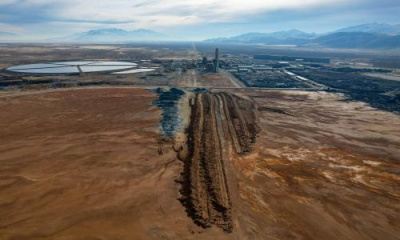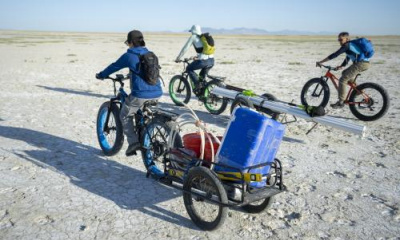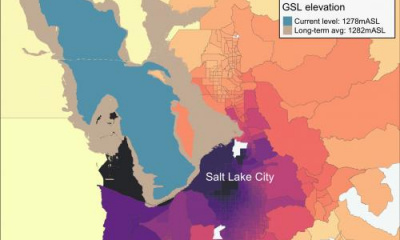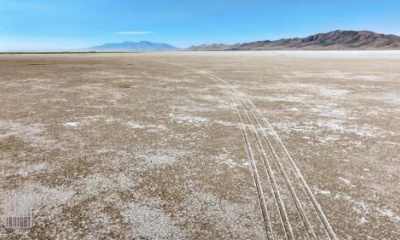SALT LAKE CITY — The Great Salt Lake's southern arm reached 4,195 feet elevation at times over the stormy weekend as it nears reaching that figure daily for the first time in five years.
While that's a key water level in the ongoing efforts to preserve the lake after it reached an all-time low in 2022, the state agency tasked with overseeing the lake's future recently took a field trip to other parts of the Southwest as it soaks up ideas that could help improve future water inflows.
The Great Salt Lake's southern arm entered this week at 4,194.9 feet elevation, 0.1 inches off the "intermediate target" outlined in the Great Salt Lake Strategic Plan that the Office of the Great Salt Lake Commissioner unveiled in January. U.S. Geological Survey data indicates that it could reach a daily level of 4,195 feet elevation as early as this week as it receives water from snowpack runoff and controlled releases from upstream dams.
The Utah office estimates that the southern arm may peak around 4,195.5 feet to 4,196 feet by the end of the snowpack runoff. It last reached 4,196 feet in 2017.
However, the lake's arm is expected to end up about 2 to 2½ feet below its minimum healthy levels before it recedes in the summer and early fall months — and it's up to ongoing strong winters to keep getting water to the Great Salt Lake unless Utah can reduce its water consumption.
That's why members of the Utah Department of Natural Resources, Office of the Great Salt Lake and other water agencies took a field trip earlier this month to tour how other Southwest communities handle water in dry climates as they search for solutions to improve the lake's water levels.
"We don't have a monopoly on all good ideas," said Brian Steed, Utah's Great Salt Lake commissioner, in an interview on Friday. "We want to know what other people have done and how well that's worked out."
What Utah learned from the trip
The agencies toured farms near Yuma, Arizona, and California's Salton Sea as a part of the trip.
Agriculture is a big industry in Yuma, generating $4 billion annually, according to the city. It's also important beyond Arizona, producing about 90% of all lettuce found in North American grocery stores during the wintertime. It's also a big-time producer of other greens and vegetables.
But growing all of that produce also requires a lot of water. Agricultural uses account for more than three-fourths of all the water consumed in Arizona, the Arizona Republic reported last year. It and other Lower Colorado River Basin states have also dealt with water cutbacks and threats of a declining water supply, as Lake Powell and Lake Mead have dropped in capacity over the past two decades amid drought and overconsumption.
This is why many farmers have turned to modern irrigation technology in recent years. The Yuma Irrigation District reports that sprinklers are now used on over 7,000 acres of produce, while other tactics are used to increase capacity and conserve water at the same time.
The University of Arizona also began administering a state irrigation water efficiency program that helps farmers pay for these types of projects in 2022. The university reported in October that farmers were already able to reduce their consumption by 36,000 acre-feet of water annually through improvements to 18,000 acres of agricultural land in the first year. The state's goal is to cut agriculture water consumption by at least 20%.
In a video about the program, Ethan Orr, associate director for agriculture, natural resources, and economic development for the University of Arizona Cooperative Extension, said Arizona now uses less water than it did in 1962 despite its crop production nearly doubling in value and its population tripling over the past six decades.
Steed walked away from the tour feeling positive about the potential Utah's agricultural optimization program has and the role it could play in helping the Great Salt Lake.
"In trying to do water savings without killing agriculture, drip irrigation offers a lot of promise," he said. "Figuring out how to do that well is something that will be a challenge for the state, but also a great opportunity."
The Utah group then traveled to the Salton Sea, a terminal saline lake in Southern California similar to the Great Salt Lake, as a solemn reminder of what could happen if the Great Salt Lake dried up. Communities around the lake are dealing with all sorts of problems with dust coming off its dried lakebed.
In fact, the federal government announced in 2022 that it would direct $250 million toward efforts to mitigate the dust and improve habitat for endangered species by the lake — all issues that could plague Utah in the future.
However, Utah Department of Natural Resources Director Joel Ferry said last week he left that tour feeling there is a "stark" contrast between the lakes' situations. There's still time to address the Great Salt Lake, which isn't exactly how he felt while observing the Salton Sea.
"The main difference that stood out to me is the fact that the Salton Sea and the efforts there are really just a 'manage the crisis' kind of a situation; whereas, with the Great Salt Lake, we're actually recovering and we've put in place policies to where we've dedicated water to the lake," he said. "I think ours is a message more of hope."
Putting lessons to use
The information gathered from the field trip is being used as the commissioner's office figures out how to implement its new strategic plan. While this year's bump is a monumental step toward the lake's recovery, Steed points out that the Great Salt Lake's full recovery isn't expected "in a year or two," barring an unexpected but welcomed string of strong snowpack seasons like the past two years.
The Great Salt Lake Strike Team, which he is a part of, is currently looking at this year's data to estimate how much additional water the lake needs annually; however, Steed estimates it'll likely be at least 400,000 acre-feet of water every year to make up for all the losses in recent decades. He adds that he would like to view other areas of the West to see what is and isn't working as the region deals with water shortages.
While the first trip mostly centered around agricultural water, Great Salt Lake deputy commissioner Tim Davis said the agency has also spoken with various municipalities and water districts over ways to cut back water consumption within the lake's basin since the strategic plan was released. The Utah Division of Water Rights is also working on a "gaps analysis" to better track water that is intended to make it to the lake.
"We have been pretty active in trying to explore the different alternatives we have out there," he said. "It's going to take everyone working together to conserve water dedicated to the lake and make sure it gets there."

